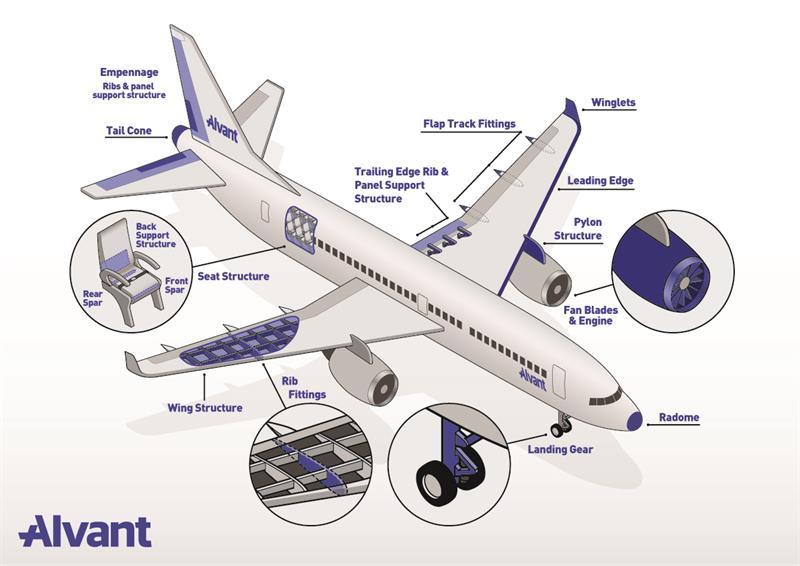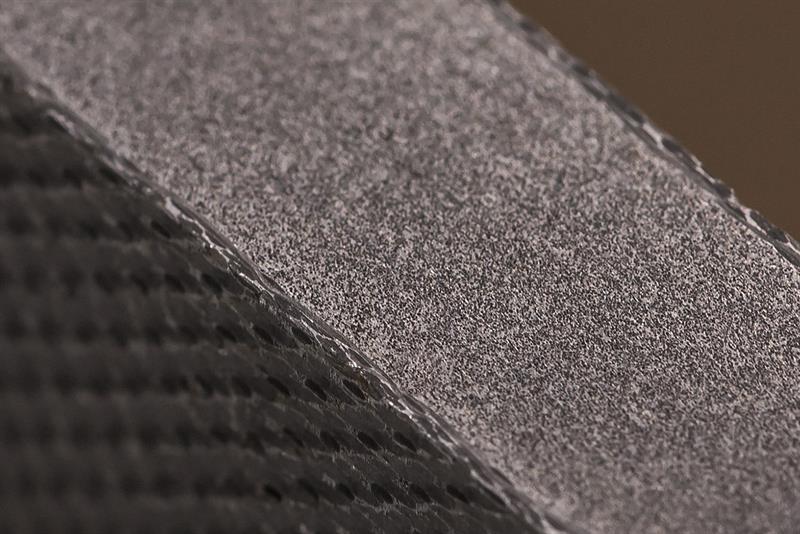When AMCs were in their infancy during the 80s, often the advantages were over-sold and their properties were largely unproven, cutting short their potential and doing little for their reputation. As carbon composites became more widely adopted, AMCs were forgotten by engineers and designers, and fell off the radar. However, fast forward almost four decades, and subsequent R&D investment into the manufacturing of these composites has resulted in progress that has been deemed a “game-changer”. Sectors such as aerospace are under sustained pressure to improve performance, and with weight reduction playing a key role, AMCs are now firmly back on centre stage.
Leading the way in the development of AMCs is UK firm Alvant. Originally formed in 2003 as CMT, Alvant has created a process known as Advanced Liquid Pressure Forming (ALPF), a method by which it brings together aluminium, which acts as the matrix, and a high strength reinforcement fibre to create a high-performance Aluminium Matrix Composite material. There are four Alvant AMC materials families, namely AlXal (pronounced Al-Zal) – a continuous fibre reinforced AMC; ParXal – a particle loaded AMC; AerXal – an aluminium syntactic foam; and CorXal – a unique high-performance multi-phase AMC similar in concept to a sandwich material but made in a single-shot process providing ultra-high stiffness and low density (~1.5g/cc).
Now the proprietary rights owner of the ALPF AMC manufacturing process, Alvant is creating a stir in aerospace, defence and automotive fields, with involvement in several key projects hailing the shift from R&D to commercial applications.
AMCs can be used to engineer durable lightweight components for harsh environments. Compared to unreinforced metals, AMCs are
said to have higher strength, greater stiffness, lower weight, superior wear resistance, as well as special thermal and electrical properties. AMCs are also claimed to offer multiple advantages over polymer fibre reinforced materials, such as carbon composites. These include higher transverse strength and stiffness, a higher thermal operating range, better wear resistance, superior damage tolerance, and easier repairability.
The potential benefits of the materials that Alvant is developing mean they have possible uses in a wide range of engineering applications benefitting from their unique, light, stiff and strong attributes.
These applications cover electrified transport, renewable energy and healthcare but are equally suitable for high-end consumer products that need to be light, strong and capable of sustaining damage such as mobile devices, biomechanical prosthetics, sports equipment and personal mobility products including wheelchairs and folding bicycles.
 Alvant believes that where safety and reliability are essential, AMCs could find use in applications in high-pressure seals, aircraft landing gear and seats. Where performance, efficiency and precision are vital, use cases include robotics, electric motors and automotive suspensions. And because AMCs are capable of withstanding extreme temperatures, they are suitable for components in high-voltage battery systems, unmanned aerial vehicles that fly at high altitudes and powertrains.
Alvant believes that where safety and reliability are essential, AMCs could find use in applications in high-pressure seals, aircraft landing gear and seats. Where performance, efficiency and precision are vital, use cases include robotics, electric motors and automotive suspensions. And because AMCs are capable of withstanding extreme temperatures, they are suitable for components in high-voltage battery systems, unmanned aerial vehicles that fly at high altitudes and powertrains.
The increased pressure faced by the industry to identify ways to improve efficiency and performance, whilst simplifying manufacturing and overall cost, has also fuelled Alvant’s recent involvement in a research programme looking at electric motor applications, called ‘making it lighter for less’, in collaboration with GE Aviation, YASA Motors and the National Composites Centre.
Alvant believes that as electrification increases, vehicle manufacturers are seeking to optimise motor efficiency maps; for example, by improving the efficiency as a function of torque and speed that ultimately determines the energy consumption for vehicles.
“Using AMCs, we have been able to attack the weight yet retain the stiffness of the electric rotor, to minimise parasitic mass, improving the power-to-inertia ratio and therefore efficiency and responsiveness,” says Thompson. “In addition, we can also offer better thermal resistance, up to 300°C, making AMCs a more suitable material than polymer composites for applications such as motors, batteries, energy recovery systems, fans and flywheels.”
Alvant is now working on a customisable metal matrix composite (MMC) multi-phase material, offering a viable alternative to titanium and carbon sandwich composites.

Alvant’s metal matrix composite is produced with a ‘one-shot’ manufacturing process and can significantly increase a component’s strength and stiffness to weight ratios
Traditional sandwich materials are typically assembled from carbon composite or unreinforced metallic panes with a variety of honeycomb cores. The metallic pane sandwiches are typically flat, 2D panels, while carbon composite varieties can take 3D forms. Touted as a sustainable and capable alternative, Alvant’s MMC is produced with a ‘one-shot’ manufacturing process and can significantly increase a component’s strength and stiffness to weight ratios.
According to Thompson, product manufacturers are becoming more aware of how AMCs can sometimes be a better alternative than other composite materials or unreinforced metals, and the calibre of partners across aerospace and automotive sectors signing-up to new projects with Alvant is proof of this.
“A key objective of any project we undertake is to test and demonstrate as many technology advances as possible,” adds Thompson. “Alvant’s AMCs are a sustainable solution that enhance product capabilities.”
“Aerospace and automotive industries face the challenge of finding suitable materials that will reduce weight whilst maintaining reliability and lowering whole-life ownership costs. AMCs offer an exciting potential to industries that need a step change in performance to meet ever stringent market and legislative demands. We are in the growth stages of an age of new materials, now is the time for the industry to stop relying on traditional technologies and embrace change.”











